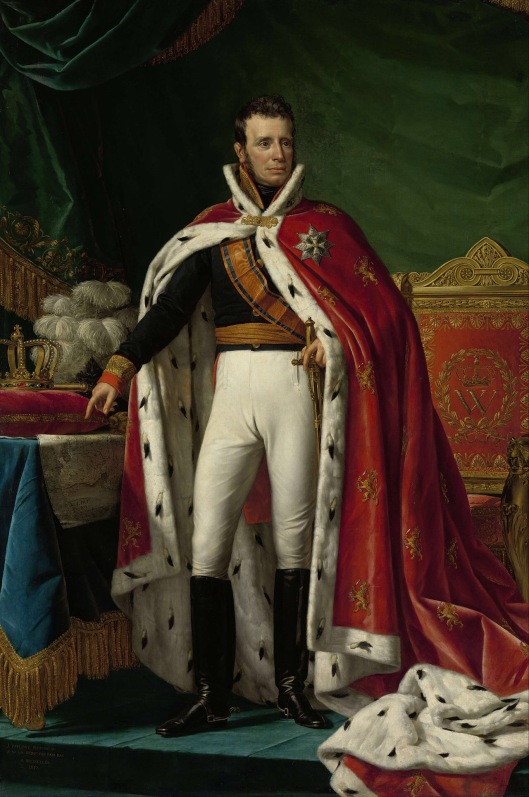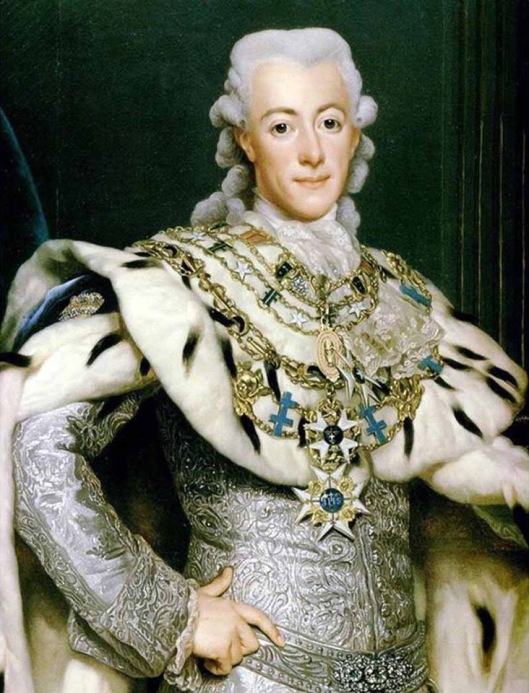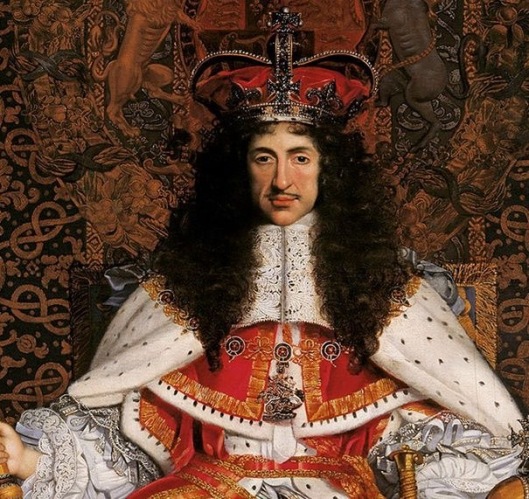Tags
Assassination, Charles II of England and Scotland, Frederick the Great of Prussia, General Monck, Grand Duke of Luxembourg, Gustav III of Sweden, Kingdom of England, Kingdom of Sweden, Kingdom of the Netherlands, Prussia, The Long Parliament, William I of the Netherlands
Three significant events on this date in History. March 16.
The Netherlands, March 16, 1815.
Prince Willem VI of Orange-Nassau becomes King of the Netherlands.
Willem I (Willem Frederik, Prince of Orange-Nassau; August 24, 1772 – December 12, 1843) was a Prince of Orange and the first King of the Netherlands and Grand Duke of Luxembourg.

Prince Willem VI was the ruler of the Principality of Nassau-Orange-Fulda from 1803 until 1806 and of the Principality of Orange-Nassau in the year 1806 and from 1813 until 1815. In 1813 he proclaimed himself Sovereign Prince of the United Netherlands. He proclaimed himself King Willem I of the Netherlands and Duke of Luxembourg on March 16, 1815. In the same year on June 9, Willem I became also the Grand Duke of Luxembourg and after 1839 he was furthermore the Duke of Limburg. After his abdication in 1840 he styled himself King Willem-Frederik, Count of Nassau.
On October 1, 1791, Prince Willem VI of Orange-Nassau married his cousin Princess Wilhelmina of Prussia, in Berlin. Princess Wilhelmine was the fourth child of eight born to King Friedrich-Wilhelm II of Prussia and Queen Frederica-Louisa (the daughter of Ludwig IX, Landgrave of Hesse-Darmstadt, and Caroline of Zweibrücken). Her upbringing was dominated by the strict regime of her great-uncle, Friedrich II the Great, but in general very little is known about her youth. The marriage was arranged as a part of an alliance between the House of Orange and Prussia, but it was also, in fact, a love match and became very happy.
Sweden, March 16, 1792
Assassination of King Gustav III of Sweden.

Gustav III (January 24, 1746 – March 29, 1792) was King of Sweden from 1771 until his assassination in 1792. He was the eldest son of King Adolf-Frederik of Sweden and Queen Louise Ulrika (a sister of King Friedrich II the Great of Prussia), and a first cousin of Empress Catherine the Great of Russia by reason of their common descent from Christian August of Holstein-Gottorp, Prince of Eutin, and his wife Albertina Frederica of Baden-Durlach.
Gustav III married Princess Sophia Magdalena of Denmark, by proxy in Christiansborg Palace, Copenhagen, on October 1, 1766 and in person in Stockholm on November 4, 1766. Sophia Magdalena of Denmark was the eldest daughter of Frederik V of Denmark and his first wife Louise of Great Britain. Louise of Great Britain was Queen of Denmark and Norway from 1746 until her death, as the first wife of King Frederick V. She was the youngest surviving daughter of King George II of Great Britain and Caroline of Ansbach. Gustav III was first impressed by Sophia Magdalena’s beauty, but her silent nature made her a disappointment in court life. The match was not a happy one, owing partly to an incompatibility of temperament, but still more to the interference of Gustav’s jealous mother, Queen Louisa Ulrika.
Assassination
Gustav III’s war against Russia and the implementation of the Union and Security Act in 1789 helped to increase a hatred against the king among the nobility that had been growing ever since the coup d’état in 1772. A conspiracy to have the king killed and reform the constitution took place within the nobility in the winter of 1791-92. Among those involved were Jacob Johan Anckarström, Adolph Ribbing, Claes Fredrik Horn, Carl Pontus Lilliehorn and Carl Fredrik Pechlin.
The assassination of the king took place at a masked ball at the Royal Opera House in Stockholm at midnight on March 16, 1792. Gustav had arrived earlier that evening to enjoy a dinner in the company of friends. During dinner, he received an anonymous letter that contained a threat to his life (written by the colonel of the Life guards Carl Pontus Lilliehorn), but, as the king had received numerous threatening letters in the past, he chose to ignore it. After dining, he left his rooms to take part in the masquerade.
Soon upon entering, he was surrounded by Anckarström and his co-conspirators, Count Claes Fredrik Horn and Count Adolf Ludvig Ribbing. The king was easily spotted, mainly due to the breast star of the Royal Order of the Seraphim that glowed in silver upon his cape. The conspirators were all wearing black masks and accosted him in French with the words: Bonjour, beau masque (“Good-day, fine masked man”). Anckarström moved behind the king and fired a pistol-shot into the left side of his back. The king jumped aside, crying in French: Ah! Je suis blessé, tirez-moi d’ici et arrêtez-le (“Ah! I am wounded, take me away from here and arrest him!”)
The king was carried back to his quarters, and the exits of the Opera were sealed. Anckarström was arrested the following morning and immediately confessed to the murder, although he denied a conspiracy until informed that Horn and Ribbing had also been arrested and had confessed in full.
The king had not been shot dead; he was alive and continued to function as head of state. The coup was a failure in the short run. However, the wound became infected, and on March 29, the king finally died with these last words: Jag känner mig sömnig, några ögonblicks vila skulle göra mig gott (“I feel sleepy, a few moments’ rest would do me good”)
Ulrica Arfvidsson, the famous medium of the Gustavian era, had told him something that could be interpreted as a prediction of his assassination in 1786, when he visited her anonymously – a coincidence – but she was known to have a large network of informers all over town to help her with her predictions, and she was in fact interrogated about the murder.
The king was succeeded on the throne by his eldest son who became King Gustav IV Adolf of Sweden.
England. March 16, 1660
The Long Parliament is dissolved.

The Long Parliament was an English Parliament which lasted from 1640 until 1660. It followed the fiasco of the Short Parliament which had been held for three weeks during the spring of 1640, and which in its turn had followed an 11-year parliamentary absence. In September 1640 writs were issued summoning a parliament to convene on 3 November 1640 by King Charles I. The parliament was summoned to pass financial bills, a step that was necessary as a result of the cost of the Bishops’ Wars. It received its name from the fact that through an Act of Parliament, it could be dissolved only with the agreement of the members, and those members did not agree to its dissolution until after the English Civil War was close to the end of the Interregnum on 16 March 1660.
It sat from 1640 until 1648, when it was purged by the New Model Army. In the chaos following the death of Oliver Cromwell in 1658, General George Monck allowed the members barred in 1648 to retake their seats, so that they could pass the necessary legislation to allow the Restoration and dissolve the Long Parliament. This cleared the way for a new Parliament to be elected, which was known as the Convention Parliament. Some key members of Long Parliament, such as Sir Henry Vane the Younger and General Edmond Ludlow, barred from the final acts of the Long Parliament, claimed it was not legally dissolved; its final votes a procedural irregularity (words used contemporaneously “device” and “conspiracy”) by General George Monck to ensure the restoration of King Charles II of England, Scotland and Ireland. On the restoration the general was awarded with a Dukedom.
